PamukkalePamukkale ("Cotton Castle" in Turkish) is the modern name of the ancient Greek city of Hierapolis. It was built near hot springs
which, over the centuries, have partially covered the ruins in natural terraces. The water contains large amounts of minerals, in
particular hydrogen carbonate and calcium. As the water cools calcium carbonate gets precipitated and forms thick white layers of
so-called travertine. Mineral deposition is not uniform due to irregular water flow. |
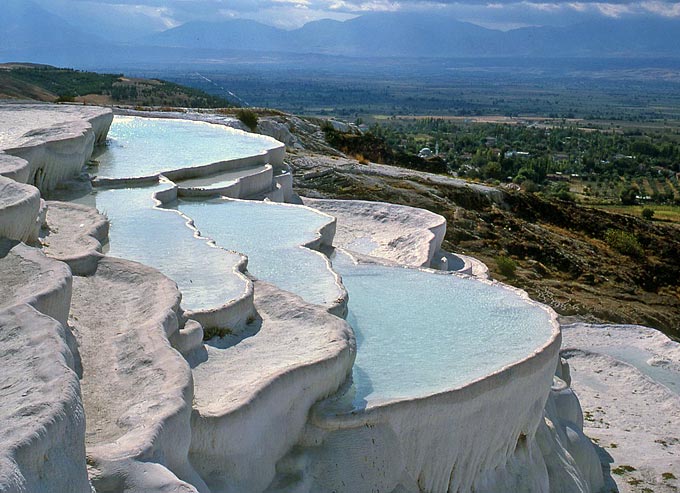 Some terraces are filled with water while others are dry. | 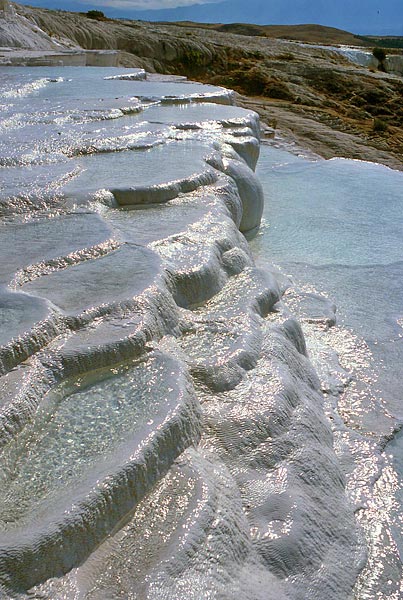 The water is cascading here from one pool to the next. | 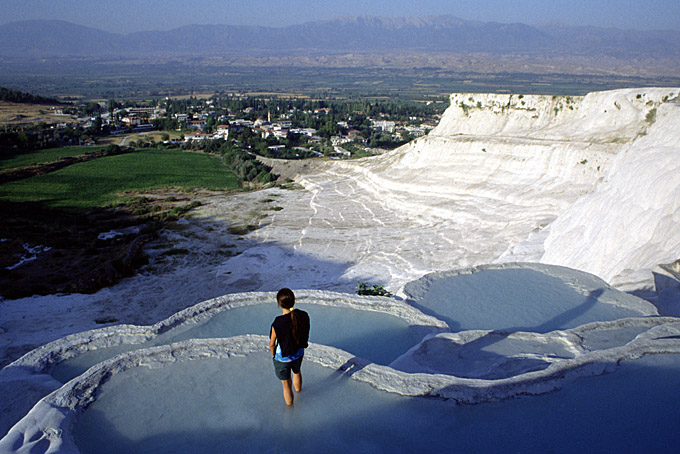 View from the terraces towards the village of Pamukkale. | 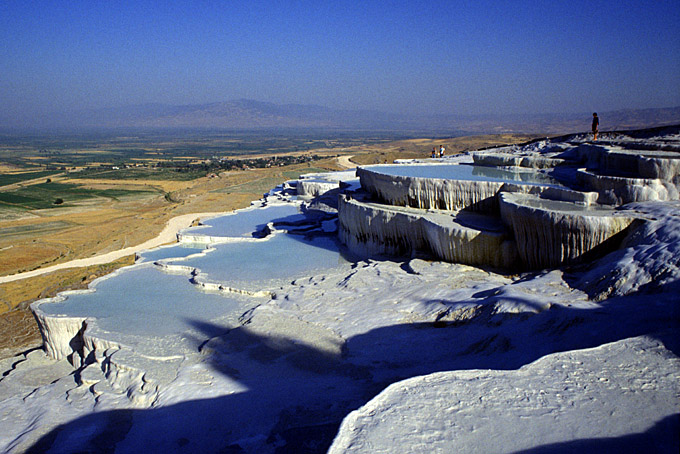 The travertine terraces and pools in the early morning light. |
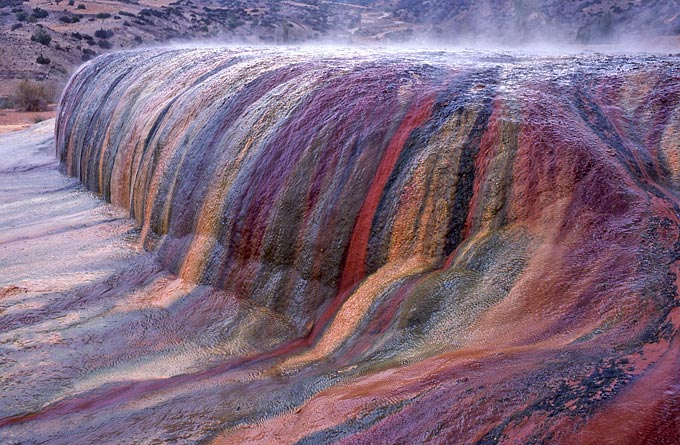 Colourful thermophile (heat tolerant) algae in the hot springs. | 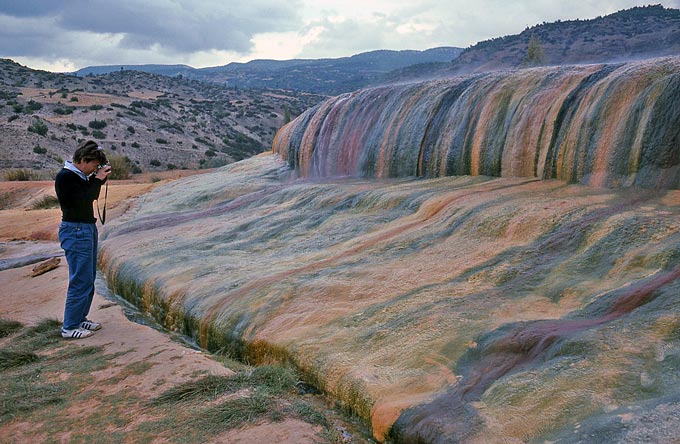 Variegated stripes of algae show the water flow. | 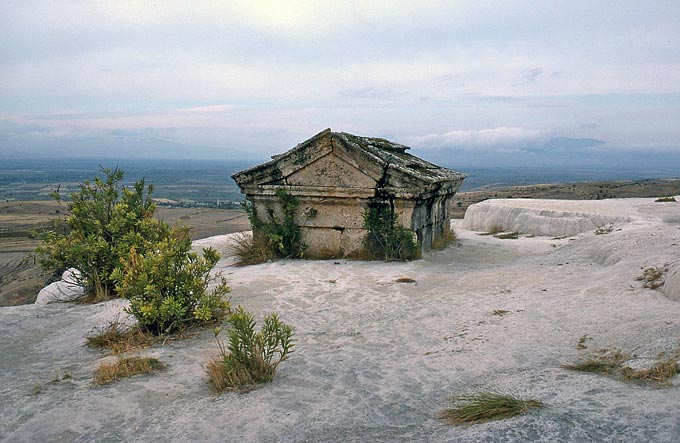 The necropolis of Hierapolis has been almost entirely buried by travertine. | 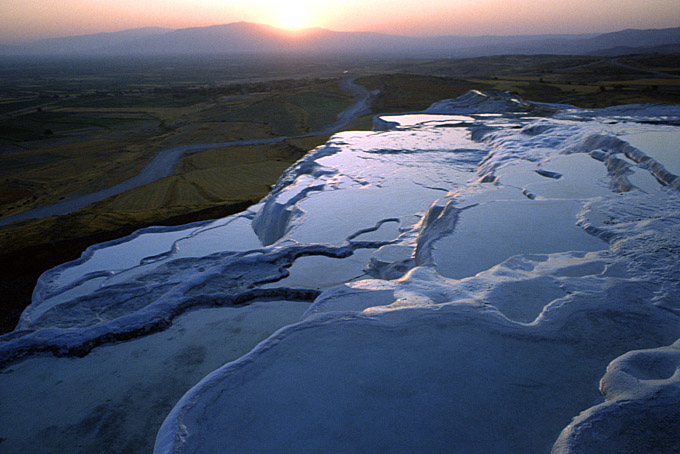 Reflection of the deep blue sky in the calm water of the pools at sunset. |
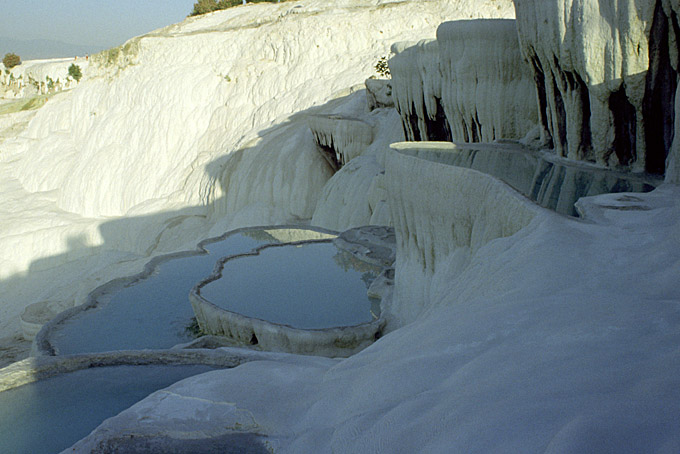 Waterless terraces on the right no longer cover dark material caused by pollution. | 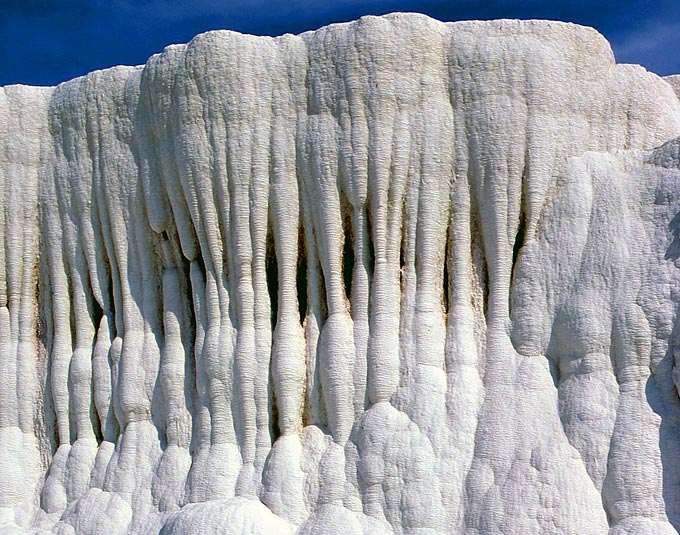 Travertine stalactites hanging on the outside of a particularly high terrace. | 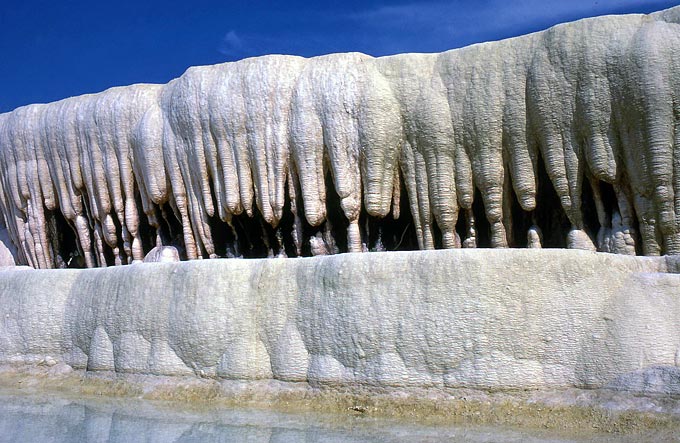 Below some stalactites (hanging) some smaller stalagmites (standing up) are forming. | 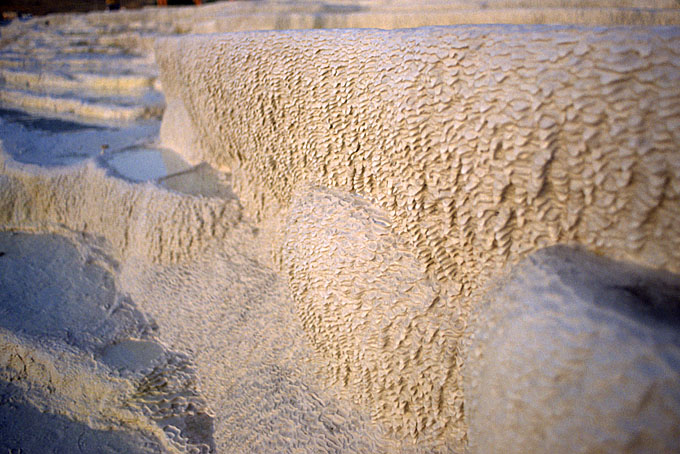 Small wavelets in the water appear petrified in the travertine's surface. |
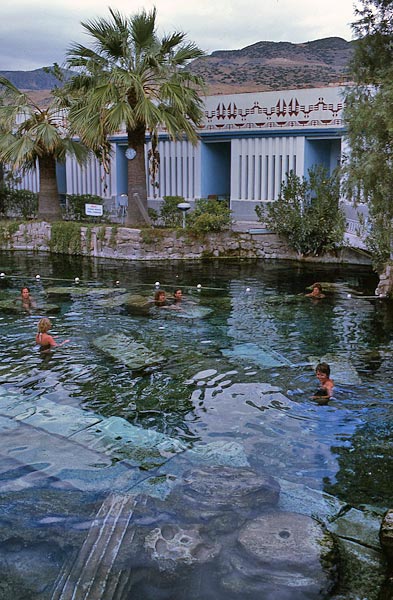 The other face of the coin: Hotels use (abuse?!) both antique ruins and hot mineral springs. | 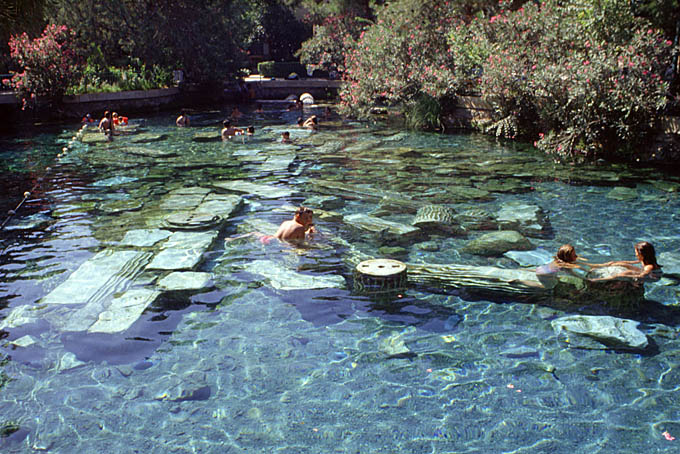 Only here one can swim among original Greek columns and capitels. | 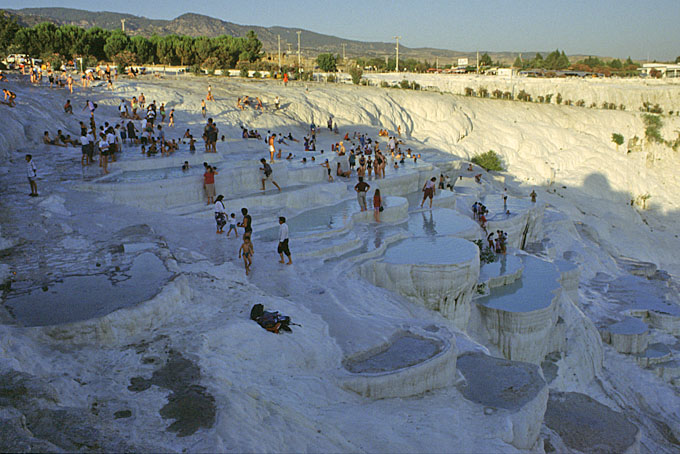 Pamukkale on a Sunday: not nearly enough pools for everybody... | 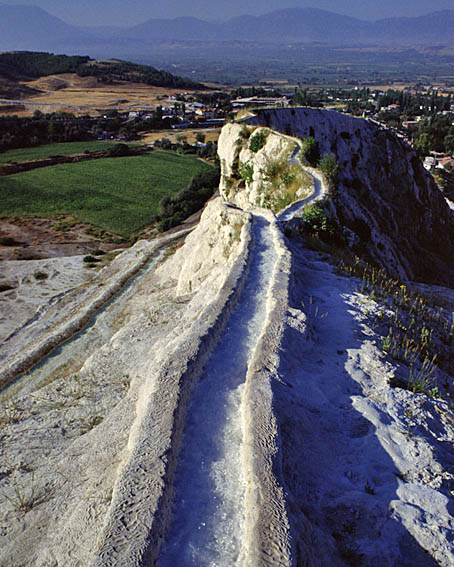 The hot water is also used in the town of Pamukkale to heat houses. |
|